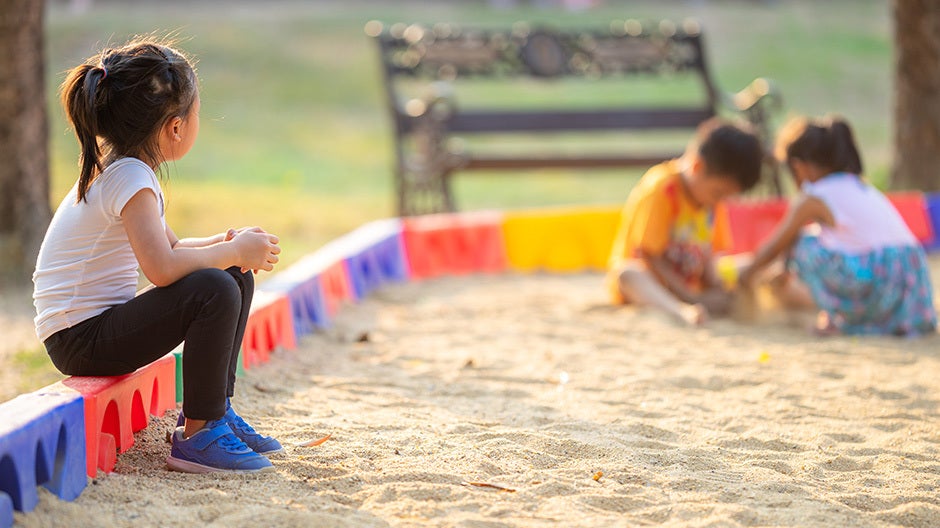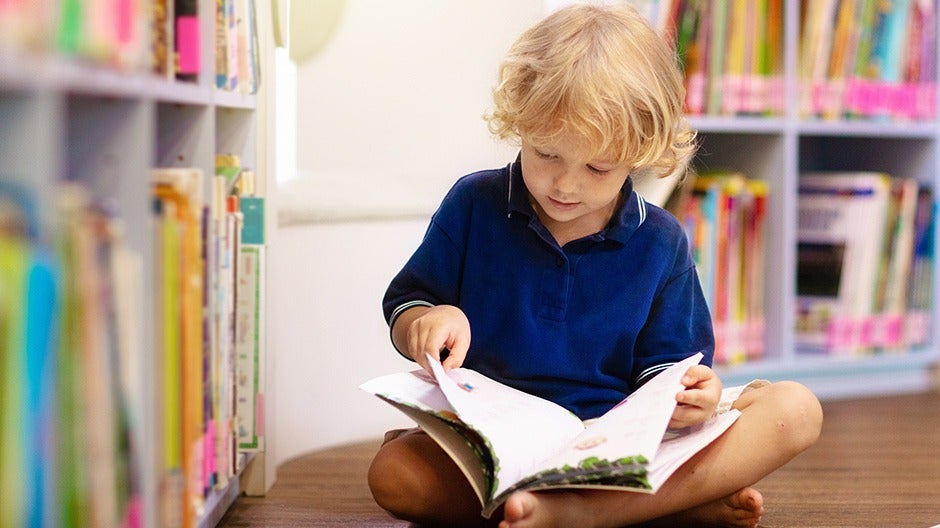Children notice everything, but they aren’t just watching for entertainment. They’re constantly observing and learning from the actions and behaviors of those around them. This is known as vicarious learning. A familiar quote helps explain the concept further: “Kids are sponges.”
Parents, teachers, and caregivers say this all the time, and you’ve probably seen it for yourself. A 3-year-old mimics her older brother’s language. A 5-year-old acts out something they see on TV.
Behavior and vocabulary spread through an elementary school classroom faster than a meme on social media.
We know it happens, but why? And how can we channel it to help kids learn the most important skills at the most important times? The answer is a theory from psychology called vicarious learning (also known as observational learning).
Table of Contents
- How Vicarious Learning Works
- Why Kids Should Learn Vicariously
- Vicarious Learning Examples
- How to Use Vicarious Learning as a Parent
- Pros and Cons of Vicarious Learning
The Short Cut
- Vicarious learning occurs when a child observes what happens when someone else does something and learns from it
- Parents can harness the power of vicarious learning by speaking aloud as they try something new, including voicing the consequences of their actions
- Vicarious learning is a great way to help kids develop important Character skills alongside a comprehensive program like Learn with Sesame Street
How Vicarious Learning Works
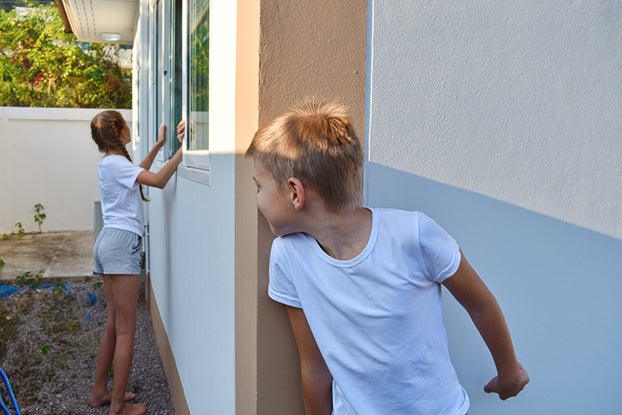
Vicarious learning happens when a kid observes someone else doing something, notices the outcome, and decides to try it for themselves.
In the classroom that might look like them noticing that when another student was kind, they were rewarded, and deciding to be kind themselves.
At home, it might look like a kid observing that when their older sibling gets upset they say, “UGH!” to get attention, and imitate them.
But kids don’t automatically imitate everything they observe (even though it sometimes feels like that!). First, they need to:
- Notice what happened
- Remember what happened
- Be physically able to imitate what happened
- Want to imitate what happened
As caregivers, we can use this (especially the last one) to help us put vicarious learning to work teaching kids the behaviors we want.
It’s also important to note that vicarious learning doesn’t only take place through direct observation. Kids can also learn vicariously through books, videos, and other media.
When Does Vicarious Learning Start?
The short answer is very early! Babies are always watching and imitating those around them, and by the time they reach toddlerhood, they’re actively seeking out new behaviors to copy.
While vicarious learning may start early in life, it doesn’t end there. Observational learning continues throughout childhood and beyond.
Many companies understand this and integrate vicarious learning strategies into employee training programs. It’s a lifelong process!
Does Everyone Learn Vicariously?
Most people can learn vicariously, but it may not be the learning method of choice for everyone. Your learning style, personality, and the specific situation all play a role in how you learn.
For example, some children may prefer hands-on learning. Others may be easily distracted and unable to concentrate on a given task, making vicarious learning less effective.
Additionally, some individuals may have a more challenging time learning from observation due to their own biases about the person or behavior being observed.
Why Kids Should Learn Vicariously
Learning vicariously is great for kids because it lets them learn without personally experiencing the consequences of an action.
Take not touching a hot pan on the stove. If a kid sees someone else touch the pan by accident, yelp “Ouch!” and stick their finger into cold water in the sink, they can learn not to touch the pan without getting their finger burned.
With no pain!
Vicarious learning is a powerful tool for teaching when experiential learning (in this case, touching the hot pan) doesn’t make sense. It’s beneficial for teaching kids not to do things that might be dangerous or harmful, such as:
- Running into the street without looking
- Playing with sharp objects
- Playing with matches
- Talking to strangers
- Running in front of the swings
By using vicarious learning, kids can understand the consequences of these actions without experiencing them firsthand.
Other Benefits of Vicarious Learning
Aside from teaching positive behaviors and avoiding potential harm, vicarious learning offers other benefits for kids. Let’s look at some of them.
Builds Empathy
When kids watch someone else experience something, they get a front-row seat to that person’s feelings. They can see how someone else reacts to a situation and learn to empathize with those feelings.
For example, if your child watches someone else get called a name on the playground, they can see how hurtful that experience is. This can help them learn not to call people names and also help give them the courage to stand up for others who might be getting bullied.
Encourages Creativity
As you watch someone try something, you analyze and reflect on their actions. This observation process can spark creativity and encourage kids to develop new ideas and solutions.
For instance, if your child sees someone building a tower with blocks, they may start thinking of ways to improve the building process. They might come up with a strategy for constructing a taller tower.
Then, when it’s their turn to build, they can put all their new ideas into action.
Expands Knowledge
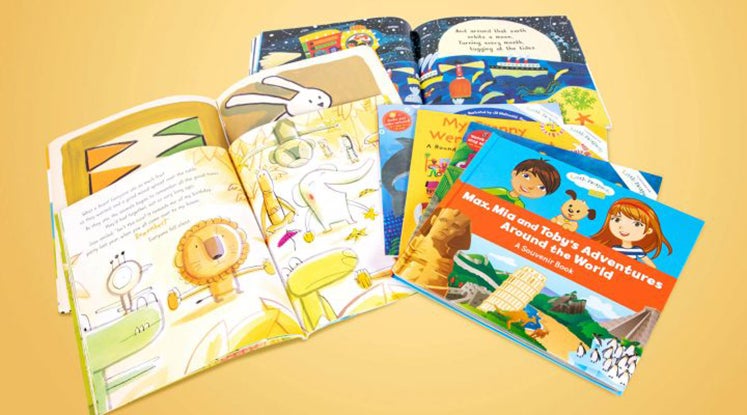
Your child won’t have the opportunity to experience everything personally. But they can learn about these things by observing others through media and books. This expands their knowledge and helps them become more well-rounded individuals.
If you’re looking for a simple way to help open your child’s mind to the world’s wonders, check out Little Passports. Each month provides a new box and a new opportunity to celebrate the richness of global cultures through hands-on discovery and fact-filled booklets.
Boosts Curiosity
Watching an artist paint a masterpiece or a scientist conduct an experiment may ignite a sense of wonder in your child. Seeing others in action can inspire them to explore new interests and passions.
They may ask questions to try and learn more or try their hand at a similar activity. Even if it doesn’t work out, the experience will encourage them to be curious and try new things.
Introduces Conflict Resolution Strategies
Inevitably, your child will observe disagreements. By watching how other people handle these situations, they can learn effective conflict-resolution strategies.
They can see the importance of managing their emotions during an argument. They may also notice that:
- Certain words or actions can diffuse a tense situation
- Active listening helps both parties understand each other
- Compromise can lead to a mutually beneficial resolution
These social skills will help your child build healthy relationships and better manage conflicts in their own life.
Encourages Adaptation
Life doesn’t always go as planned. By observing others, children can learn to adapt and handle unexpected situations. They can see how others respond to change and learn from their actions.
For example, if a child watches their parents deal calmly with a flat tire or an unexpected change in plans, they’ll likely learn how to handle similar situations. This can help them develop resilience and flexibility.
Shows “What If” Scenarios
No parent wants their child to get lost in the woods or stranded on a deserted island, but by experiencing these situations vicariously, you can help your child be prepared. As they watch movies or read books with these themes, they may ask, “What if that happened to me?”
And once they start thinking about that question, they’ll likely pay closer attention to survival tactics they encounter later. This can help them better prepare for emergencies and encourage self-sufficiency.
Vicarious Learning Examples
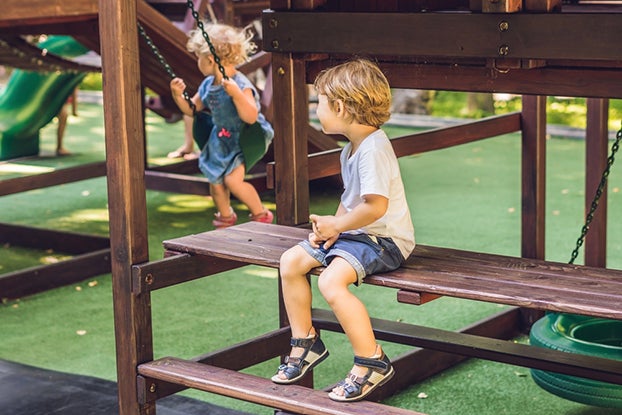
Now that you know more about vicarious learning, let’s look at some examples. We’ll see what this type of learning looks like in different environments.
At Home
- A cousin seeks comfort from a parent by asking for a hug, and a kid learns to ask for hugs when they’re sad.
- A sibling is upset, so they say they need some alone time and go to their room for a few minutes to calm down, and a kid learns to do the same.
- A visitor tries to pet a grumpy cat, who hisses and swats at them, and a kid learns not to pet the grumpy cat.
- Dad replaces the batteries in the remote control when it stops working, so the next time a child’s toy stops making noise, they try replacing the batteries and it works.
- Every time the phone rings, mom answers it, “Hello,” and a kid learns that’s how you start a phone conversation.
In the Classroom
- A student is praised or rewarded by the teacher for being kind to a friend, and other students learn that kindness is rewarded at school.
- A student shares their crayons with a peer, and they both end up smiling and having fun together. Another student sees and learns that sharing can be joyful.
- The teacher calls on a student who raises their hand and waits patiently (rather than yelling out their answer), and another student learns to do the same to get the teacher’s attention.
- A student is disciplined for hitting another student, and students learn that hitting has negative consequences.
- A student volunteers to perform a song in music class and is applauded by the class, and other students learn that taking creative risks is rewarded at school.
At a Friend’s House
- A friend gets a treat after they clear their plate from the table at dinner, and a kid asks for the same at home.
- A friend’s parent gets them a snack right away after school, and a kid asks their parent for a snack after school at home.
- A friend feeds the dog every night and seems proud of it, and a kid asks if they can feed the dog at home.
- A friend has a TV in their room and watches shows while doing their homework, and a kid wants their own TV too.
- When the child arrives at their friend’s home, their friend shows them where to put their backpack and gives them a quick tour of the house. The next time the child has a guest over, they remember to do the same to help their guest feel more comfortable
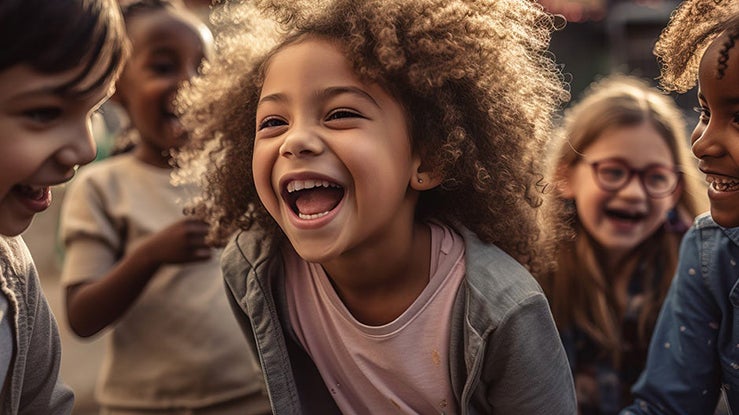
On the Playground
- Other kids laugh when a friend tells a joke, and a kid repeats the same joke at home.
- Older kids are having fun playing a complicated game, and a kid tries to recreate it with their friends or siblings later.
- A friend gets a small cut and asks a teacher for a bandage, and a kid starts asking for bandages when they get small cuts at home.
- During recess, a friend shares a toy and suggests taking turns, and the next time a kid brings a toy, they offer to share.
- Some kids climb up the slide backward and are cheered on by other kids, so the next time you go to the playground, your child asks to do the same thing.
In Media
- A book character perseveres through challenges to achieve their goals, and readers learn about determination and resilience.
- A popular TV show portrays diverse characters and promotes acceptance and inclusivity among its audience, and viewers learn about the importance of diversity.
- A news article highlights the negative impact plastic pollution has on marine life and readers decide to start recycling as much plastic as possible.
- While watching a movie, a child observes the main character being kind to someone who has been bullied, so they decide to sit next to a child who is bullied on the bus and become their friend.
- When watching family members play a video game, everyone keeps dying in the same spot, so the child decides to try a different way through the level to see if they can keep their character alive longer.
No matter where you are or what you’re doing, chances are there’s something (or someone) to observe and learn from.
Sometimes vicarious learning teaches kids behaviors that you want to reinforce, like asking loved ones for comfort. Other times it teaches neutral behaviors, like asking for a treat after doing a chore, that may or may not work for your family.
But it can also teach or reinforce behaviors you want to discourage, like a kid raising their voice when upset, hitting back when someone hits them, or using unkind words to get attention or feel powerful.
Setting consequences for negative behaviors and applying them consistently can help avoid this.
How to Use Vicarious Learning as a Parent
Using vicarious learning to teach your kids boils down to one important idea: What kids observe working for others to get something they want, they’ll likely try themselves.
This leads to three important parenting principles:
1. Treat Others Like You’d Treat Your Kids
If you’re trying to reinforce or discourage behavior in your kids, but you’re not consistent with their siblings, your partner, their friends, their cousins, or others, vicarious learning will muddle your message.
For example, let’s say you’re teaching them that shouting across the house isn’t a good way to get your attention, and they should come find you if they need you instead.
If you respond to their sibling (or your spouse!) shouting across the house for you, they’ll observe that and be more likely to keep shouting to get your attention.
2. Don’t Just Let It Slide
Imagine again that you’re trying to teach a kid not to shout across the house. Every time you break down and shout back, vicarious learning kicks in.
The kid sees that, contrary to what they’ve been told, shouting is a good way to get your attention.
And because it comes from the kid’s own observations, vicarious learning is powerful—kids often trust what they’ve seen for themselves over what you’ve told them if the two come into conflict.
3. Course-Correct In Front of Everybody
That said, we get it: It’s hard to never shout back across the house! You’re going to sometimes, even if it’s just to say “You need to come speak to me!” And when you do, kids can get mixed messages about whether shouting across the house works or not.
Luckily, in order for vicarious learning to work, kids need to notice what happened, remember it, be able to imitate it, and want to imitate it.
You can’t control the first three, but you can exert a strong influence on the fourth.
Taking a second to say, in front of all the kids in the house (because they’re all observing, not just the one who shouted), something like, “I just shouted across the house back to you. Oops! I shouldn’t have done that,” will help kids understand that even though they saw shouting work this time, it won’t necessarily be like that if they try it in the future.
You can even reinforce it with a lighthearted consequence (“Now I can’t speak until someone says ‘Mommy’ again.”).
Vicarious Learning vs. Modeling
Parents are often told to model good behavior for their kids (and it’s important—kids learn that way too!).
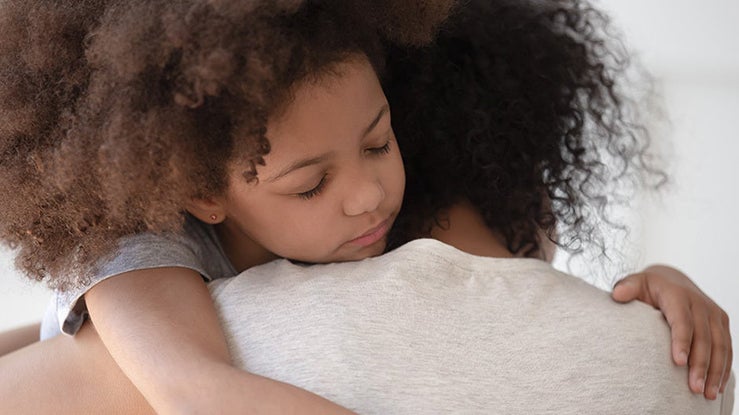
Taking advantage of vicarious learning can sometimes feel like the same thing, but it’s slightly different.
When you’re modeling behavior for your kids, they’re learning directly from what you do. Vicarious learning occurs when kids observe what happens to other people.
In addition, vicarious learning is more spontaneous. You aren’t thinking of a scenario to teach a specific lesson. Instead, your child is trying to learn from the events and actions happening organically around them.
Another important distinction is that you don’t always get to pick what your child learns vicariously. They constantly watch and learn from the world around them. You may be surprised by what they focus on and pick up!
Here are two examples to help clarify the difference:
- If you ask for a hug when you’re feeling sad, that’s modeling. If a child’s sibling or friend asks for a hug when they’re feeling sad and the child observes, remembers, can imitate the behavior, and wants to imitate it, that’s vicarious learning.
- If you set up a role-playing scenario to teach your child how to respond when someone calls them a name, you’re modeling. If your child sees two kids calling each other names on the playground and watches how they respond, that’s vicarious learning.
Pros and Cons of Vicarious Learning
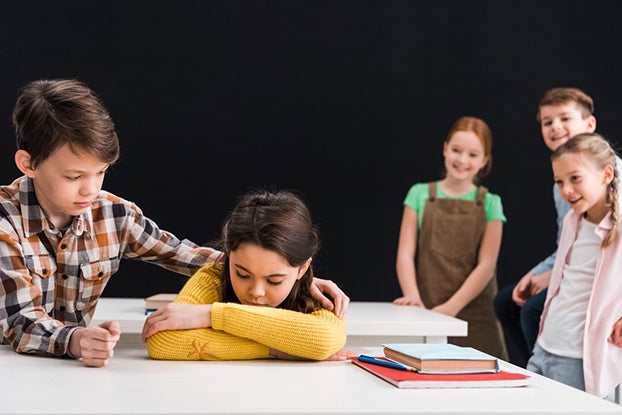
While vicarious learning can be an excellent tool for character development, it has its pros and cons, like any other type of learning.
Pros
- Provides opportunities for children to learn from role models
- Helps develop social skills
- Can broaden a child’s perspective on the world
- Provides a safe way to learn about dangers
Cons
- Negative behaviors can also be learned
- Children may not always interpret what they observe accurately
- Stereotypes could be reinforced
- Not a great fit for all learning styles
You’ll want to monitor what your child observes or watches to mitigate the potential disadvantages. This is especially true when they’re young and very impressionable.
Building Character with Begin
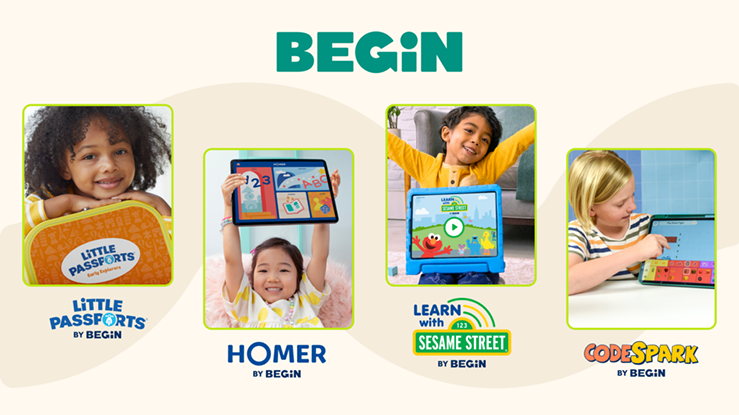
Vicarious learning can help your child build their character. At Begin, we understand that Character—how kids interact with the world—is one of the most important skill areas for kids to develop.
Kids with strong Character skills enjoy better mental health and well-being, as well as higher income and educational levels later in life. It matters!
Our Learn with Sesame Street by Begin social-emotional learning program gives kids access to engaging, effective Character-building content created by Begin and Sesame Workshop.
It includes a kid-safe, ad-free, replayable app full of engaging games, original classes with Elmo and friends, videos from Sesame Workshop, and a Grown-Up Guide by Begin to help parents understand what their kids are learning and how to reinforce it.
Whether through Learn with Sesame Street or our learning membership that grows with your child, Begin can help the kids you love develop the most important skills for 21st-century success, including Character. Take our quiz and see how we can help your family today!
